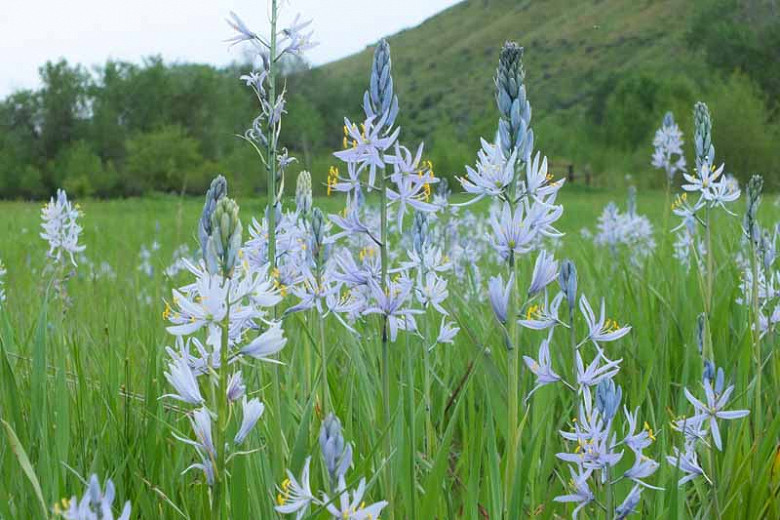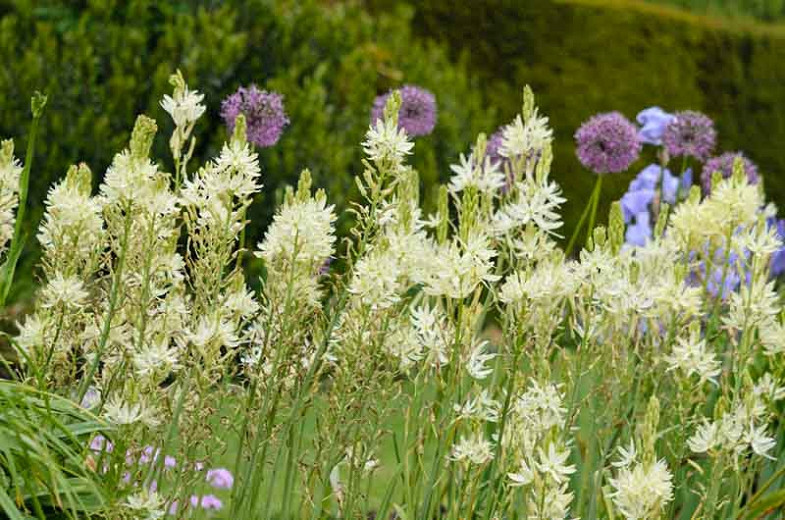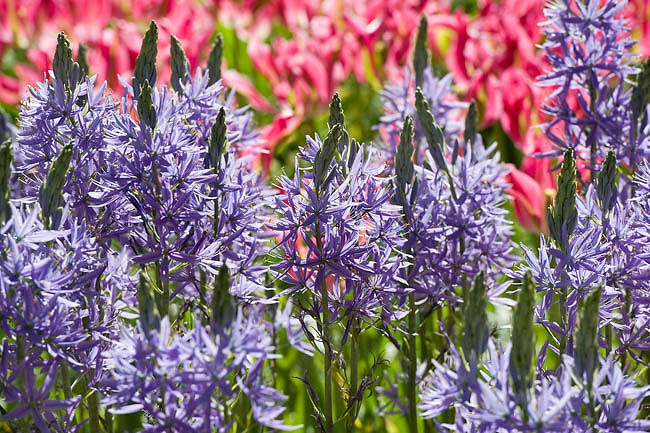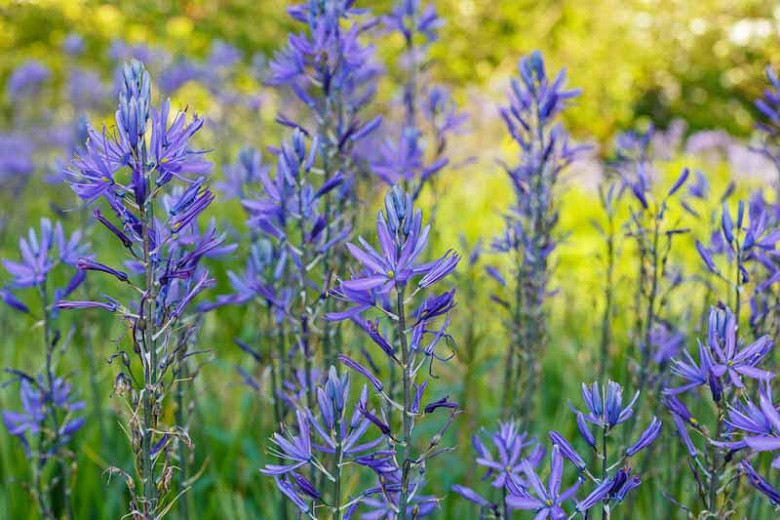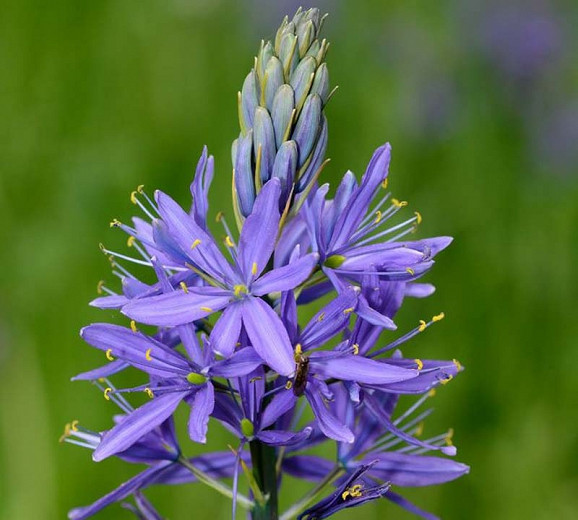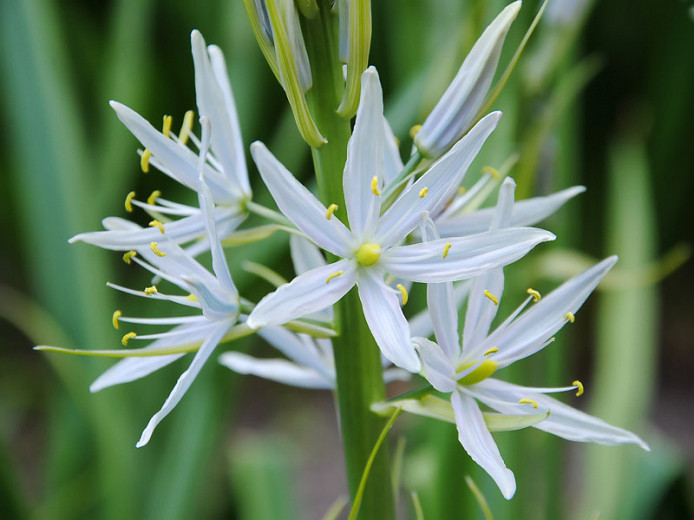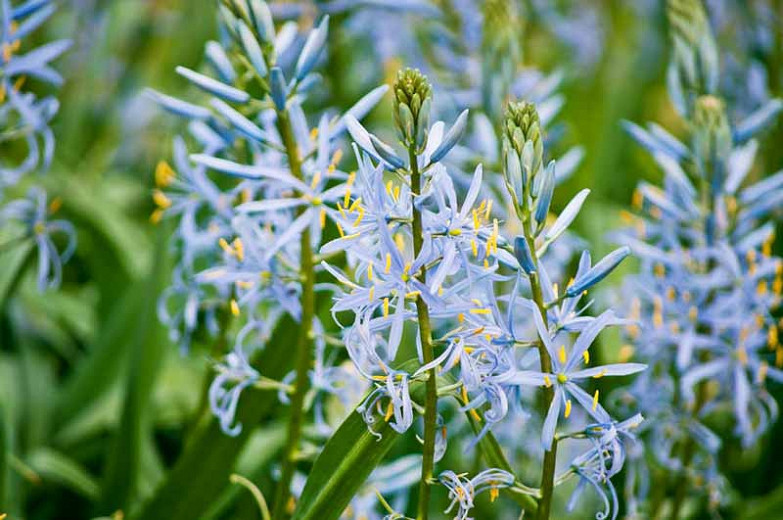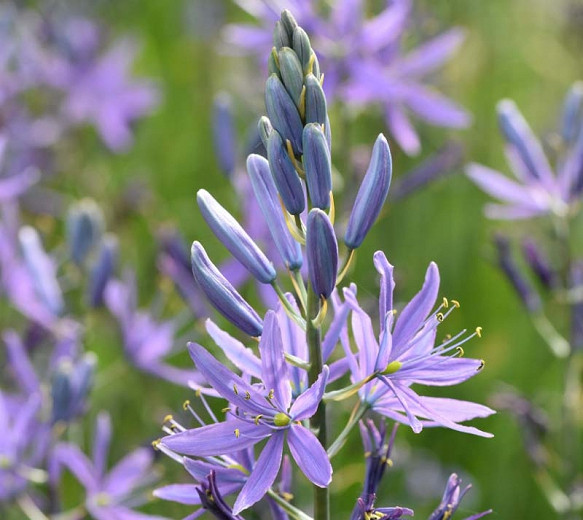Camassia quamash (Camas)
Camassia quamash (Camas) is a clump-forming bulbous perennial with upright racemes packed with dozens of star-shaped, sky blue to deep blue flowers, 3 in. across (7 cm), adorned with 6 showy tepals, a green center, and bright yellow stamens. They attract bumblebees, mason bees, hoverflies, and beetles. Borne on stout, willowy stems, they open sequentially from bottom to top for a long-lasting display. Blooming in late spring to early summer, they rise atop a pretty foliage clump of long, narrow, grass-like, bright green leaves. A striking feature in the garden, this useful bulb adds something different to the borders at a time when the summer perennials have not yet hit their stride. If the plants are happy, they will gently reseed into the surrounding area.
- Growing up to 1-2 ft. high (30-60 cm), this beauty naturalizes easily and will come back year after year!
- Easily grown in full sun to part shade in fertile, humus-rich, moist, well-drained soils. Prefers full sun. Needs regular moisture during the growing season, but will tolerate drier conditions after bloom as the plants head for summer dormancy. Intolerant of waterlogging and may need some protection from frost in cold areas
- Ignored by deer and rodents. Clay soil, dry soil, and wet soil tolerant.
- Generally pest and disease free
- Stunning in beds and borders, cottage gardens, and wildflower meadows. Spectacular in large sweeping drifts. For best visual impact, plant in groups (at least 10 to 15 bulbs). Excellent as cut flowers.
- Mixes beautifully with other late spring flowering bulbs and creates stunning combinations with pink or white Delphiniums, Peonies, or Irises.
- To be planted in the fall, 4-6 in. deep (10-15 cm) and 6 in. apart (15 cm).
- Propagate by seed sown in pots in a cold frame as soon as the seed is ripe. Remove offsets when dormant in winter.
- Cut back faded flower spike.
- Native across the Pacific Northwest and Northern California.
Requirements
| Hardiness | 4 – 11 |
|---|---|
| Heat Zones | 1 – 11 |
| Climate Zones | 1, 1A, 1B, 2, 2A, 2B, 3, 3A, 3B, 4, 5, 6, 7, 8, 9, 10, 14, 15, 16, 17 |
| Plant Type | Bulbs, Perennials |
| Plant Family | Camassia – Camas |
| Exposure | Full Sun, Partial Sun |
| Season of Interest | Spring (Late)Summer (Early) |
| Height | 1' – 2' (30cm – 60cm) |
| Spread | 1' – 2' (30cm – 60cm) |
| Spacing | 6″ (15cm) |
| Depth | 4" – 6" (10cm – 15cm) |
| Water Needs | Average |
| Maintenance | Low |
| Soil Type | Chalk, Loam, Sand |
| Soil pH | Acid, Alkaline, Neutral |
| Soil Drainage | Moist but Well-Drained |
| Characteristics | Cut Flowers, Showy |
| Native Plants | United States, California, Pacific Northwest, Idaho, Oregon, Washington, Rocky Mountains, Montana, Utah, Wyoming, Southwest, Nevada |
| Tolerance | Clay Soil, Deer, Rabbit, Dry Soil, Wet Soil |
| Attracts | Bees |
| Garden Uses | Banks and Slopes, Beds and Borders, Rain Gardens, Underplanting Roses and Shrubs |
| Garden Styles | Informal and Cottage, Prairie and Meadow |
